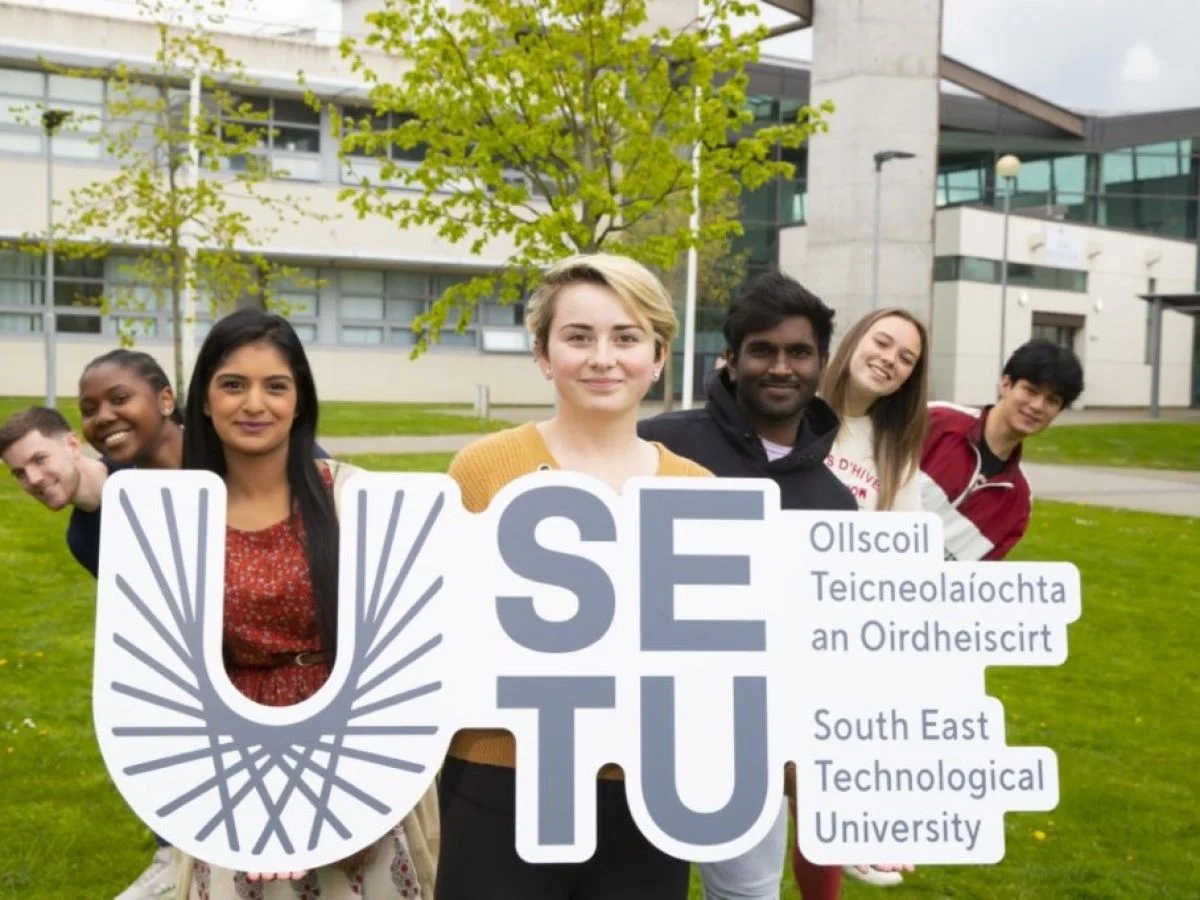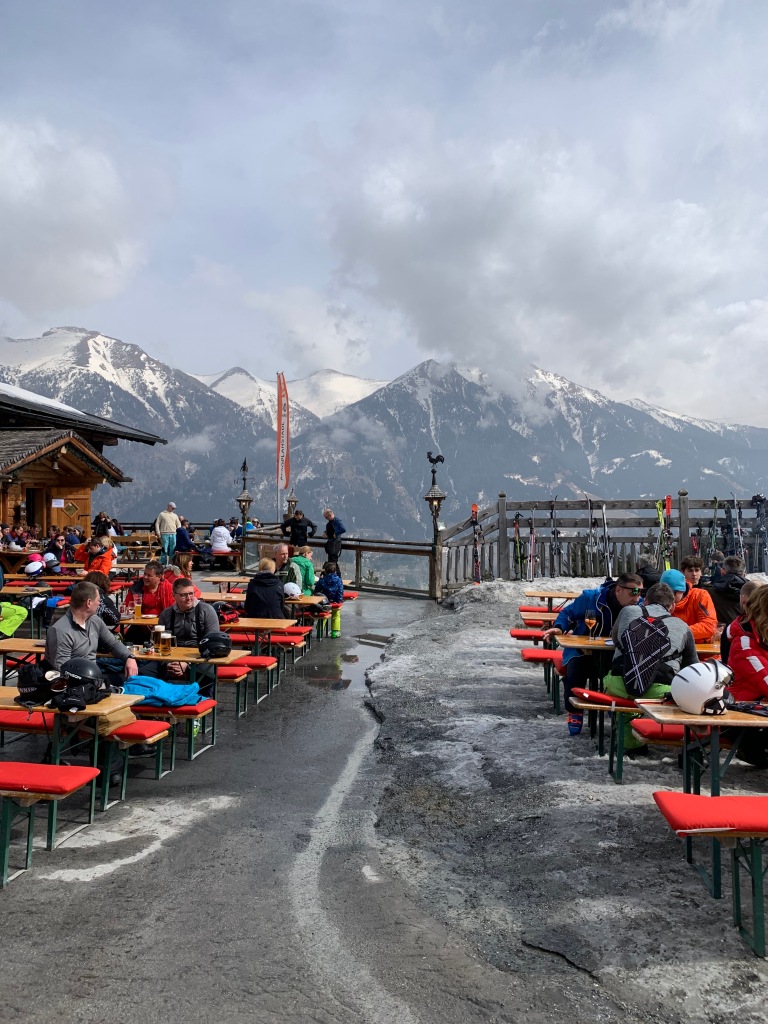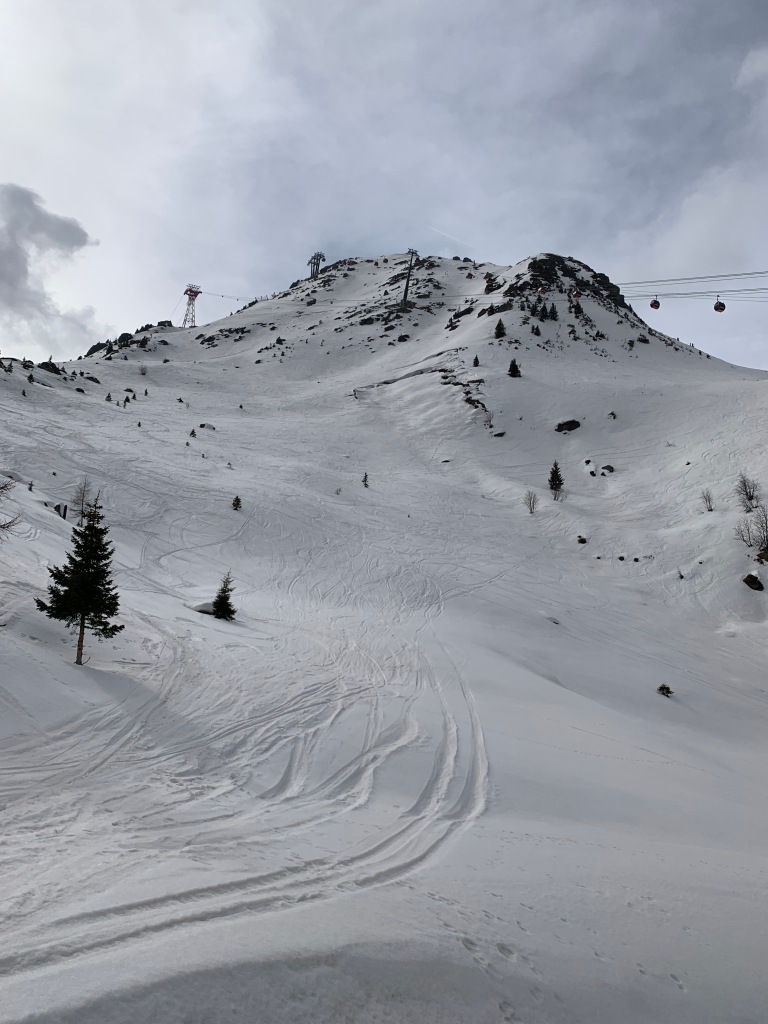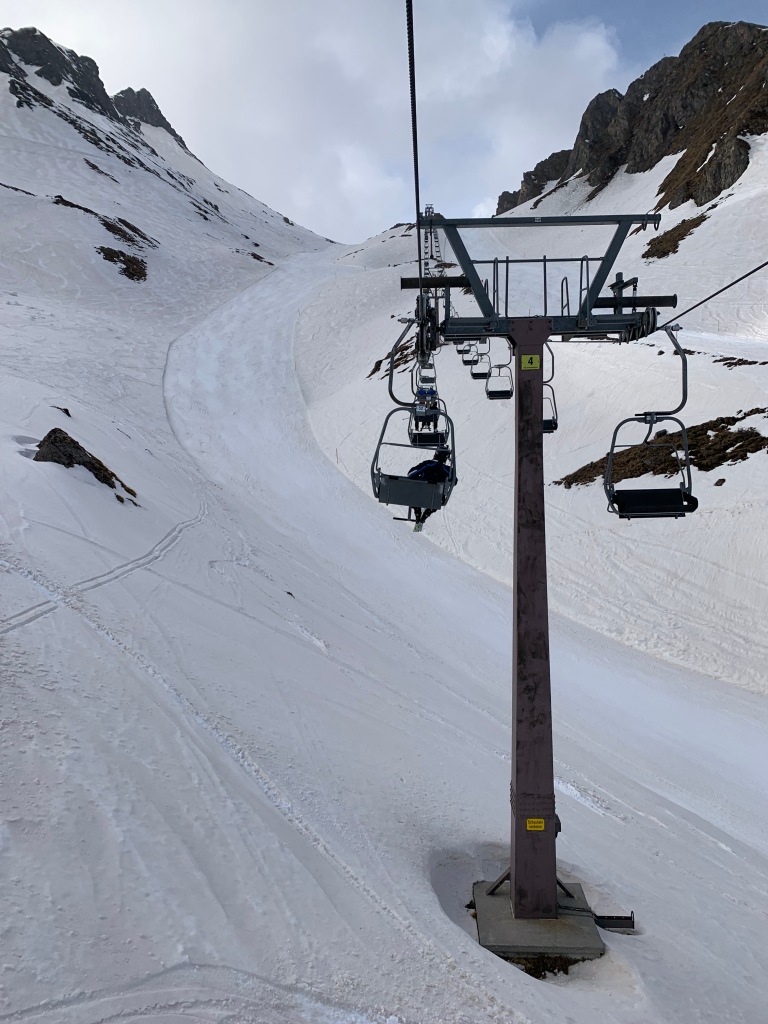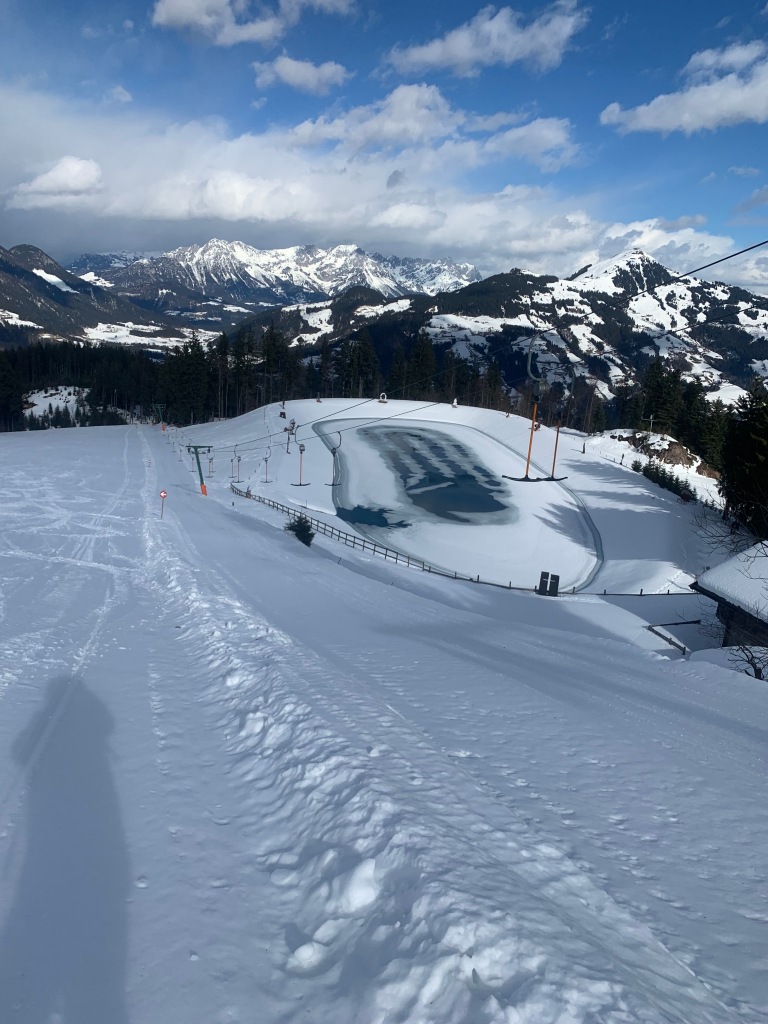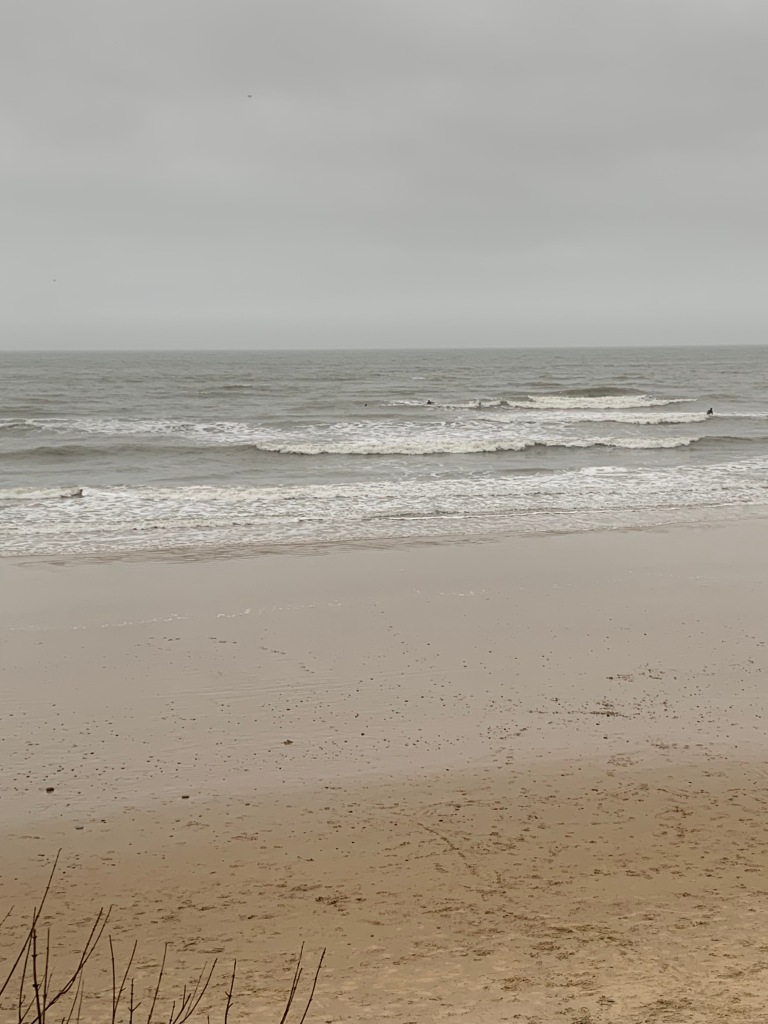This week, the 4th international conference on the history of physics finally took place at Trinity College Dublin. The event, supported by the Institute of Physics and the European Physics Society, was the fourth in an ongoing series of international conferences on the history of physics, a biennial series of meetings that aims to bring together professional historians and physicists with an interest in the history of their subject.

It was a great pleasure to attend this particular conference of the series, as it had been postponed many times due to the Covid virus. Because the meeting was initially expected to take place in 2020, close to the twin centenaries of Rutherford’s discovery of the proton as a fundamental constituent of the atom and the Eddington-Dyson eclipse experiment to measure the bending of light, it was decided that a major theme of the conference would be ‘On the road to modern physics’.
Thus, there were several great talks on the Eddington expedition by Daniel Kennefick, Ana Simoes and Jerry Gilmore, to name but a few, and a presentation on the discovery of the proton by Nadia Robotti. There were many other interesting talks, from Peter Gallagher’s presentation on astronomy at Birr Castle down through the ages to Michael Jewess’s account of the Einstein-de Haas experiment. Other highlights were a presentation on the cosmology of Alexander Friedmann by Alexamder Kojenikov, marking the centenary of Friedmann’s famous paper, and a superb talk on the experiments of Eunice Newton Foote by Sir Roland Jackson (see conference programme here).
The keynote lecture, ‘The Discovery of Pulsars – A Graduate Student’s Tale’, was given by Dame Jocelyn Bell Burnell, Ireland’s most eminent physicst and discoverer of pulsars. Earlier that day, a moment of comic relief was provided when, during my own talk on the recent vote by the International Astromonical Union to rename Hubble’s law, Professor Bell Burnell, who was chairing the session, revealed that she herself had taken part in the vote! (She also revealed that the voters were not made aware of the historical points I raised). You can find the slides for my talk here.
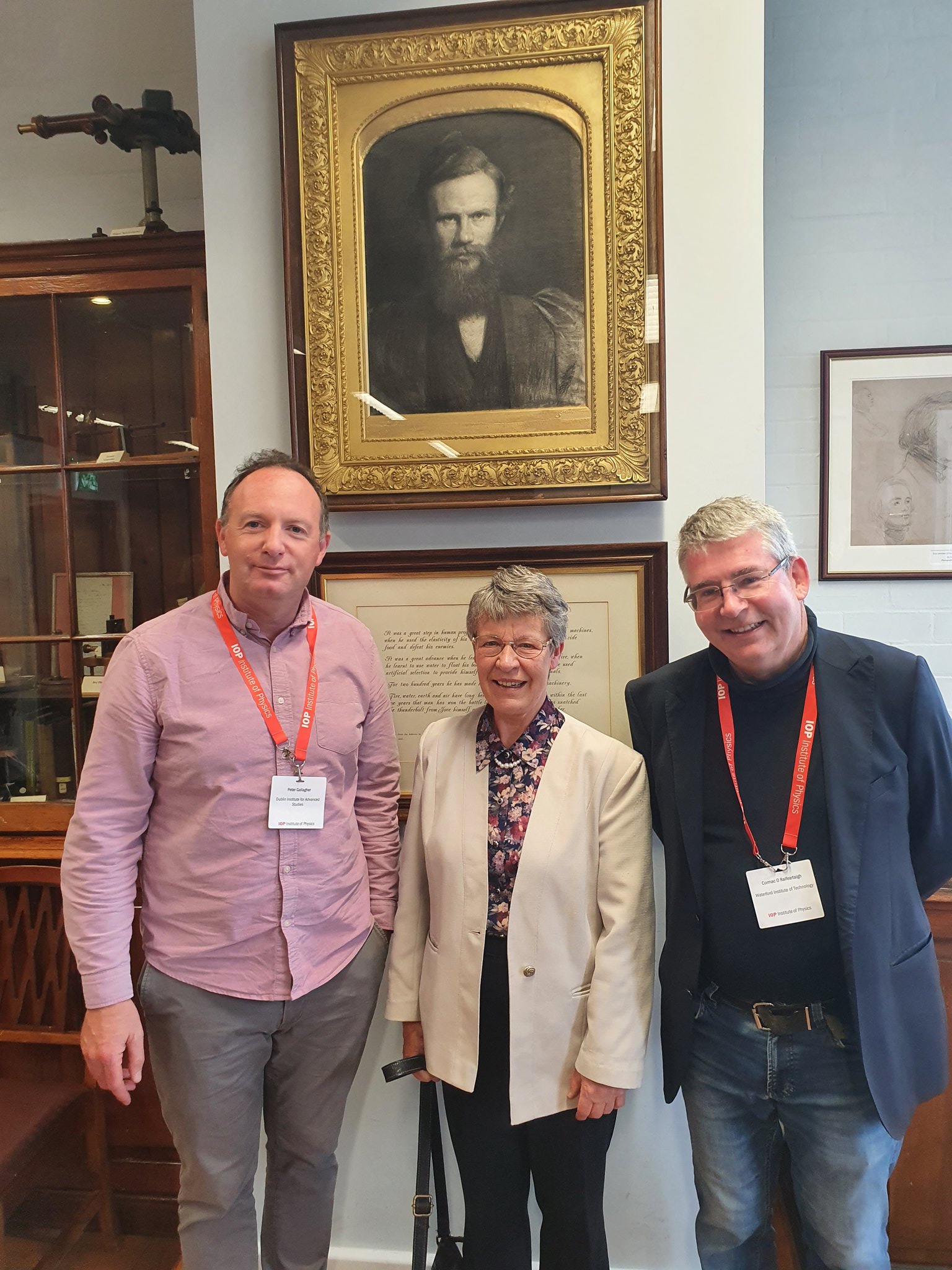
Yours truly with Professor Peter Gallagher (LHS) , Director of the School of Cosmic Physics at the Dublin Institute for Advanced Studies, and Professor Bell Burnell, discoverer of pulsars. Above us is a portrait of the famous Trinity physicist George Francis Fitzgerald.
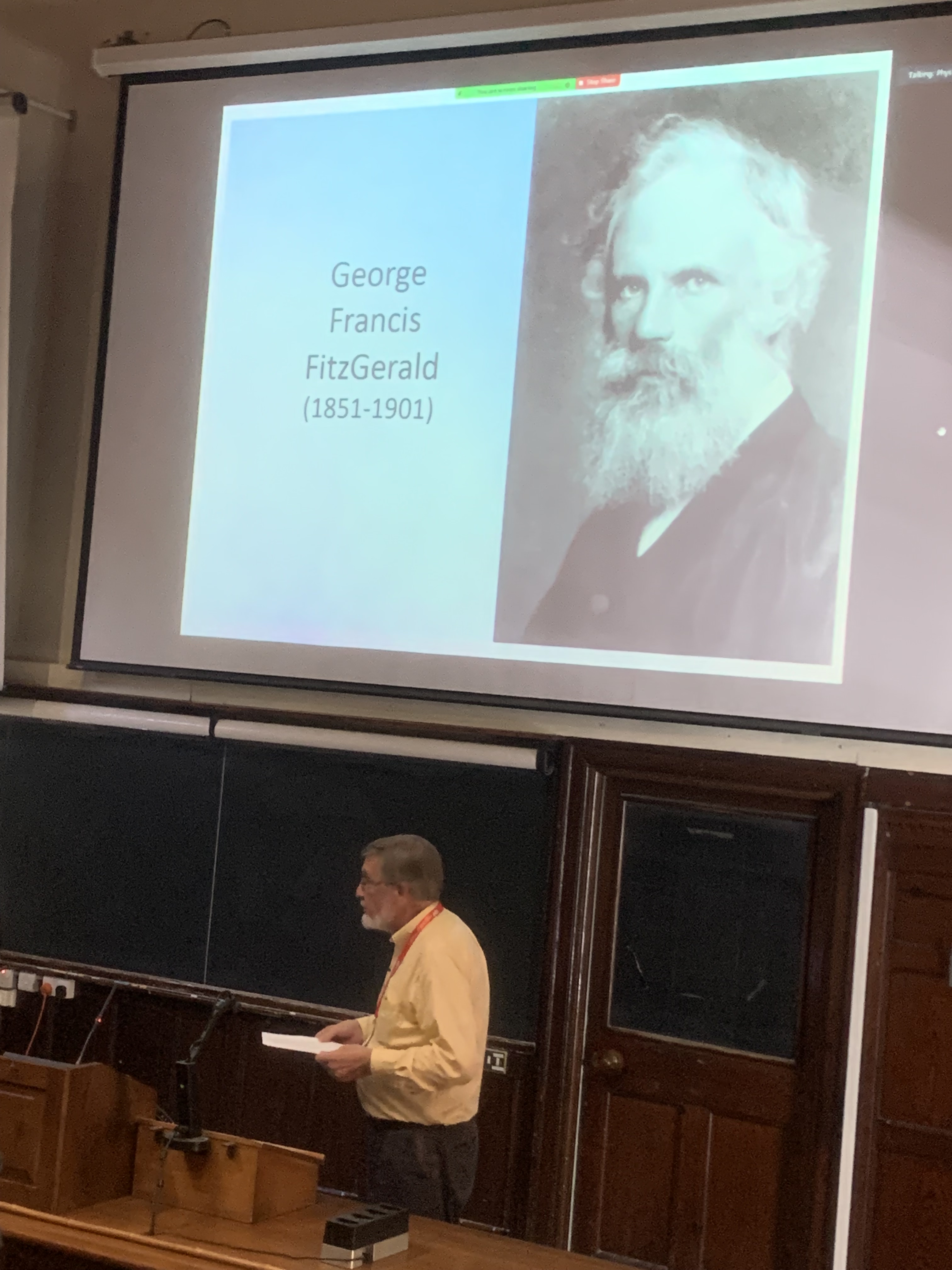
A presentation on the work of the noted Trinity physicist George Francis Fitzgerald by Professor Bruce Hunt of the University of Texas.
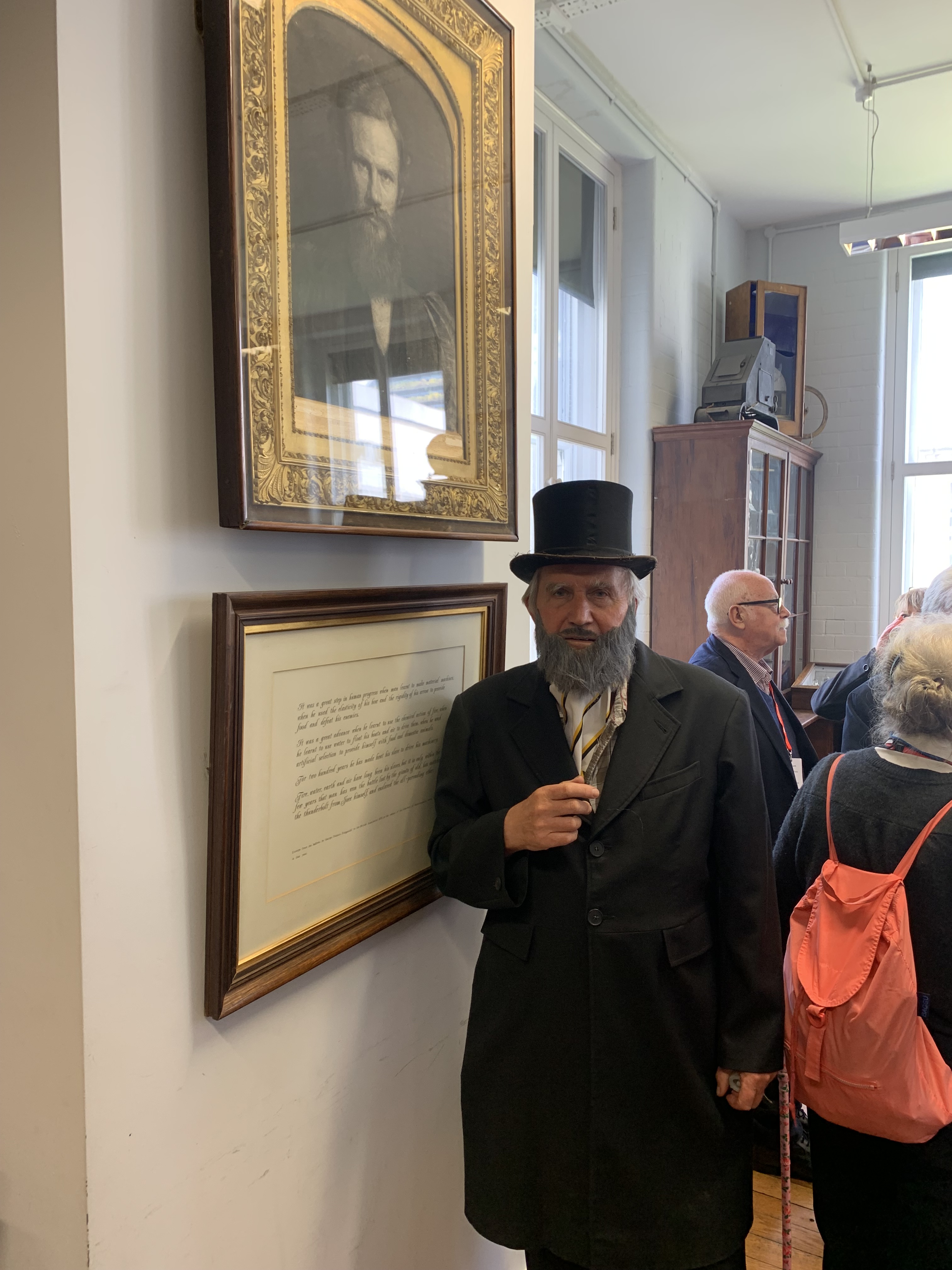
George Francis Fitzgerald stands below his portrait in the GFG library (impersonation by Prof Denis Weaire of Trinity College Dublin).
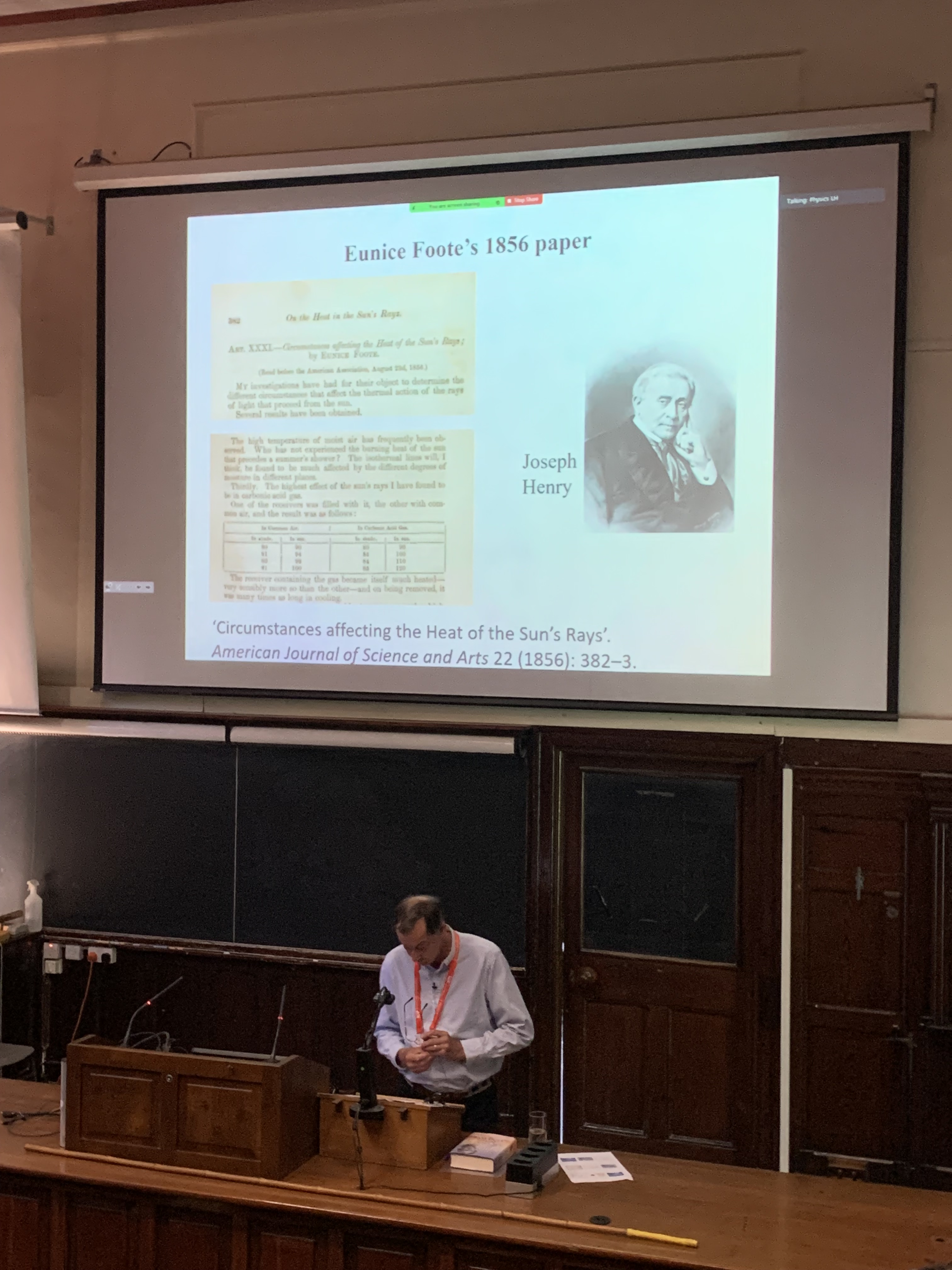
Sir Roland Jackson presents a talk on the pioneering climate science experiments of Eunice Newton Foote
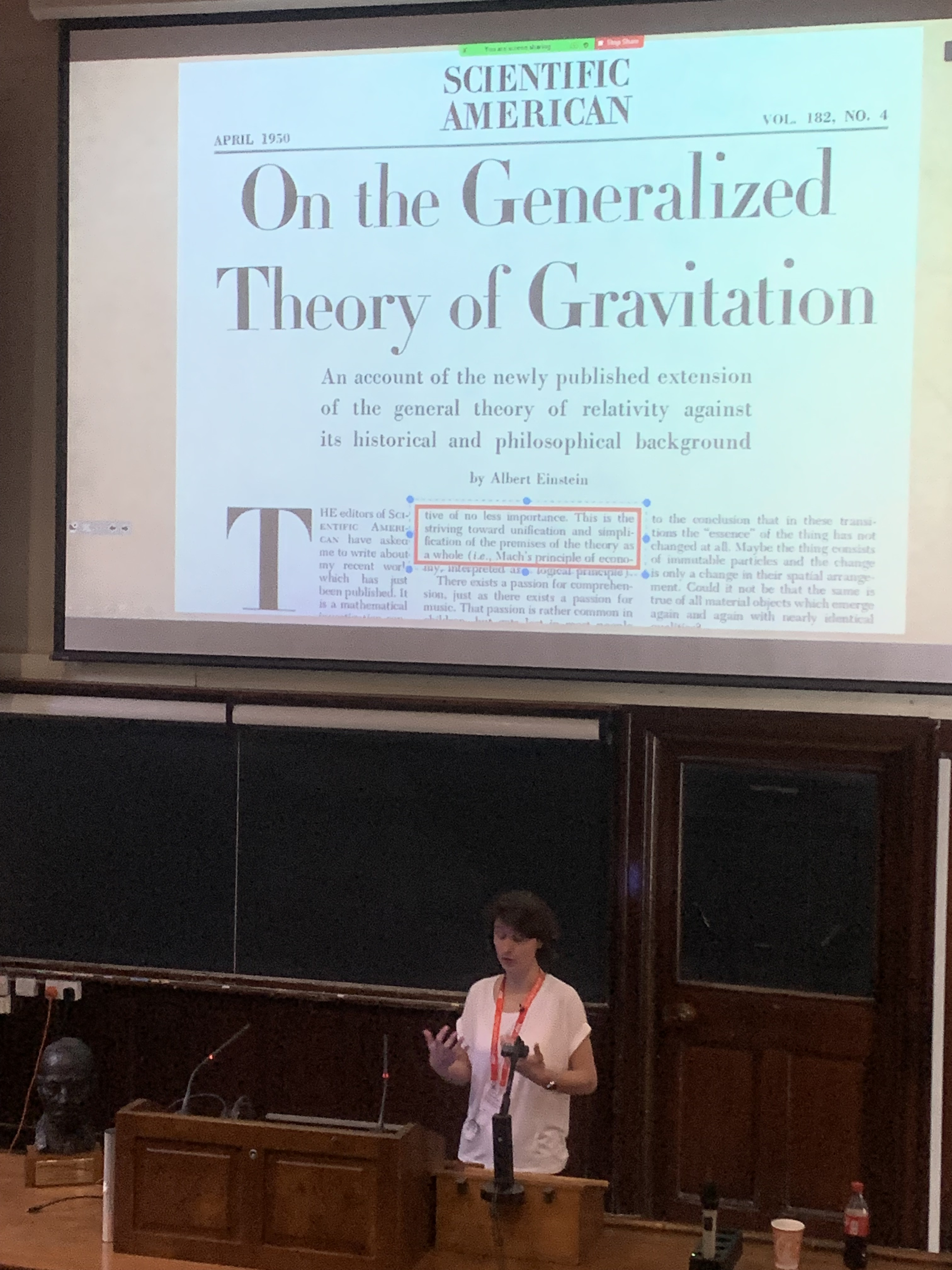
Dr. Berndaette Lessel from MPI Berlin giving at talk about Einstein’s quest for a unified field theory
All in all, it was a most a most enjoyable conference. There were many challenges in organising the meeting, not least due to the many postponements, with several changes of management along the way – that it finally happened is thanks mainly to the herculean efforts of Professor Ted Davis of the University of Cambridge. But it was definitely worth it – a most enjoyable and stimulating meeting, and it was nice to be back at Trinity College Dublin, my old alma mater. I wish there were more conferences like these, truly stimulating.
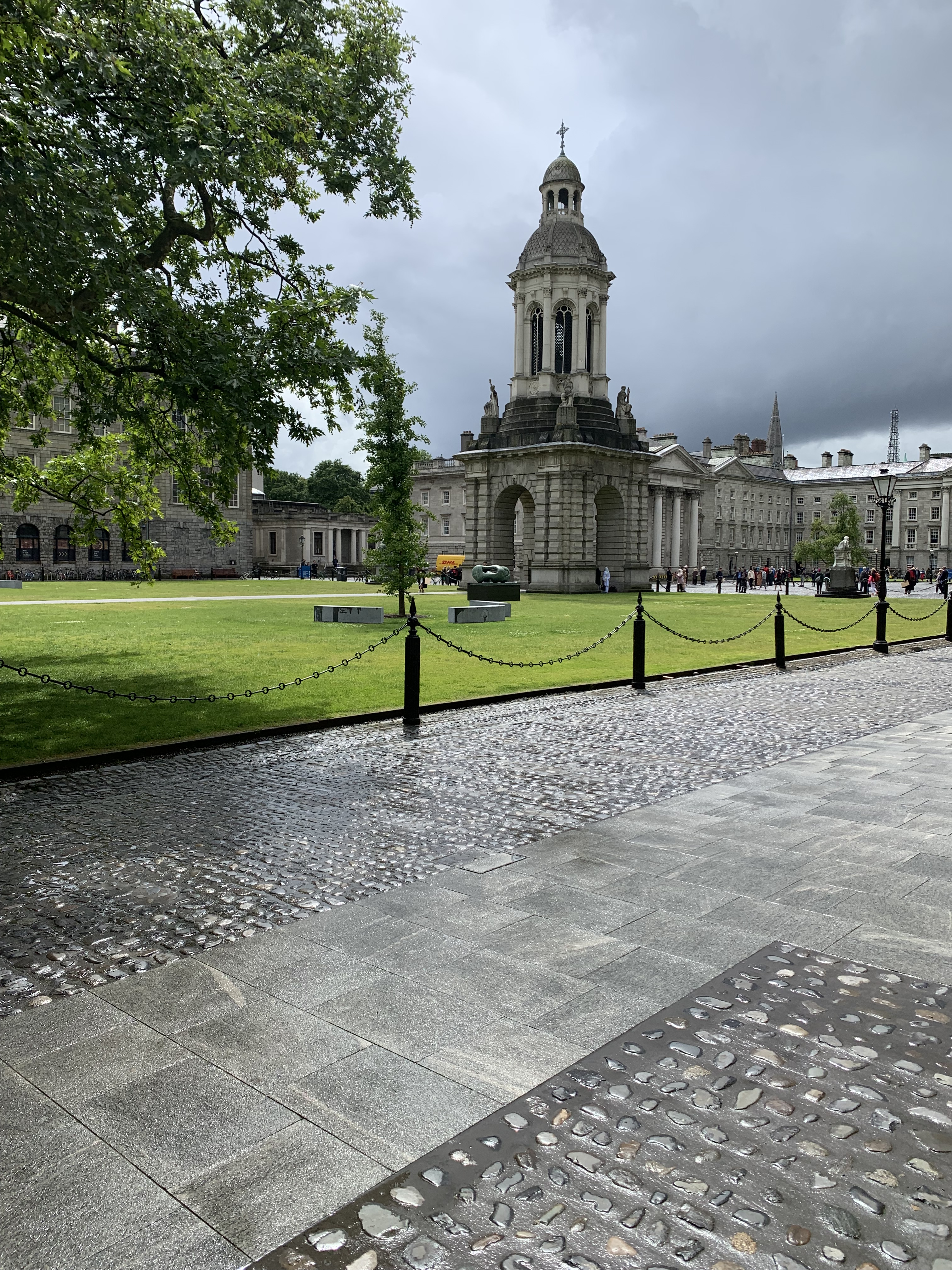
Even walking to lunch is a treat at Trinity College Dublin
Speaking of alma maters, my poor Mum finally lost her battle against dementia during the conference. She had defied the laws of science for some time, but I received news of her passing while I was attending the meeting, uncannily reminiscent of the way I often received a phone call from her as I was chatting with my PhD supervisor in the very same room all those years ago. Ar dheis De go raibh a hAnam.

